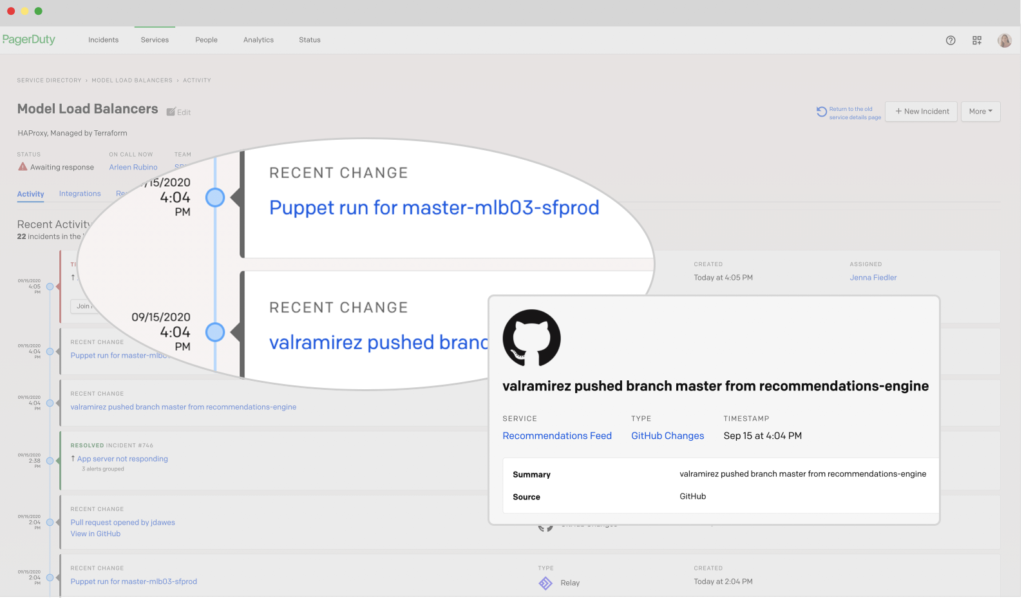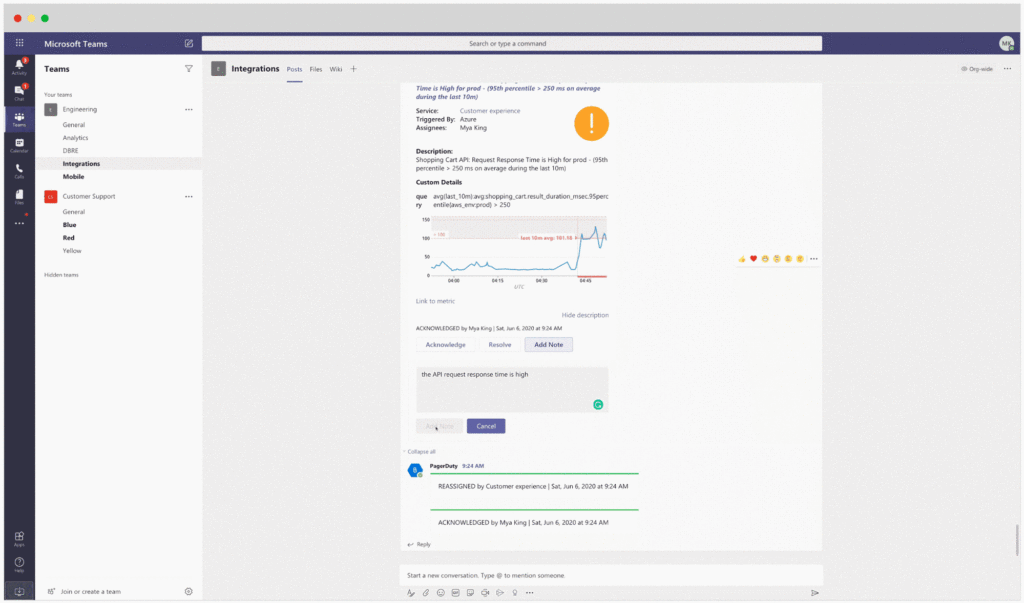- PagerDuty /
- Blog /
- Announcements /
- The PagerDuty Platform Release: It’s Time to Master Digital Operations
Blog
The PagerDuty Platform Release: It’s Time to Master Digital Operations
Even before the COVID-19 pandemic, increasingly complex and often distributed technology environments posed a challenge for software-driven enterprises.
Now, the global health catastrophe has accelerated digital transformation timelines and forced a complete shift to digital interactions between enterprises and customers, as well as internally between teams and coworkers. What IT professionals have accomplished in the past 6 months is nothing short of astounding.
But the work isn’t over yet, and now we find ourselves in this new world where digital operations is emerging as the heart of all businesses. The result is that there is more noise to filter through, more services and dependencies to track, and an even stronger requirement for real-time response orchestration within and between teams to succeed today.
Now, more than ever, people and technology resources need to be focused on what matters: delivering customer satisfaction, along with efficient and effective digital operations. That means leaning on technology to automatically reduce unnecessary noise. It means delivering dynamic, bi-directional, and real-time incident response in today’s collaboration applications. And it means automating and adopting powerful machine learning-driven AIOps in simple, easy-to-use ways, wherever possible.
To help support our customers as they rise to the challenge, PagerDuty is proud to announce our latest platform release, which enables organizations to:
- Break free from complexity through automation, machine learning, and Event Intelligence, which uses historical machine and human behavioral data to help predict and prevent incidents so teams can be more creative and future-focused.
- Share the power of digital operations with more people in the business through collaboration tools and large-scale, enterprise-wide communications that give teams the ability to inform the right people and proactively solve problems in your tool of choice, when seconds matter.
- Move to a full service-ownership model, leaning on the Service Directory as the real-time source of information for knowing the status of a service in question, who is on call, what runbooks are associated with a service, and much more.
- Manage the massive increase in user onboarding and the need for enhanced reporting, audits, and ease of navigation.
We’ll be covering all of this and more in detail over the following days! Watch the Summit product keynote on demand to see firsthand how our latest innovations can help you and your teams respond better, faster, and with more automation.
AIOps
With the increased strain on digital operations, teams are forced to find ways to do more with the same number of people. Though infrastructure and data volumes are both growing astronomically, many organizations simply don’t have the operating budget to get more headcount. And now that we are all operating in digital-first (or digital-only) settings, it’s important to reduce outages and resolve incidents in minutes—not hours—when they do occur.
One way you can do this is by using machine learning to find the root cause and get the right people collaborating to solve the problem faster. PagerDuty has focused our product roadmap on addressing these issues and is proud to release new features that employ AIOps to help with noise reduction, root cause analysis, automation, and auto-remediation, plus analytics and insights.
Intelligent Recommendations
Intelligent Recommendations use machine learning to suggest actions to reduce noise and improve team efficiency, while also providing the projected ROI results of adopting the prescribed actions. PagerDuty has found that, by implementing noise reduction recommendations, customers could see up to a 67% decrease in noise reduction on average.
Curated Advanced Analytics and Maturity Model Planning
PagerDuty Analytics Lab extracts insights from PagerDuty’s deep dataset for personalized analytics to answer a myriad of questions (e.g., What was the cost of the last incident? Which incidents affected my resolution time?). Plus, we’ve codified our Maturity Model and benchmark data from over 13,000 customers to help users gauge where their businesses are in their digital journey, and to show them how they can improve their maturity by taking action on optimization recommendations.
Dynamic Service Dependencies
Dynamic Service Dependencies automatically surface upstream and downstream dependencies of related incidents to speed up issue resolution, reduce work duplication, and prevent future incidents. You can now also automate the chore of keeping dependency information in your service directory fresh with machine learning recommendations and bi-directional integrated service data from key partners like ServiceNow, so that your team can operate from one source of truth.
Change Impact Mapping
By linking changes in a customers’ software deployment pipeline with incidents in its digital operations, PagerDuty allows teams to quickly find and resolve an incident’s root cause. With an estimated 80% of incidents caused by change, this is an important advancement. This new capability integrates change events from code repositories via new integrations with GitHub, Puppet, and Evolven.

Flexible Automation Controls
Flexible Automation Controls integrate with third-party automation tools to pause incidents and run remediation steps to prevent interruptions for responders and reduce or resolve incidents entirely. Serving as an interface between people and machines, PagerDuty now suggests where automation may help and can ensure no humans are interrupted when they shouldn’t be, but alerts them when needed. This provides enterprises with a trustworthy way to integrate and accelerate automation across their enterprise.
Enterprise Communication and Collaboration
Real-time collaboration is critical to thrive in the current environment. PagerDuty has always had the world’s leading real-time incident response platform to drive that type of critical collaboration when it’s needed most. Now we’re making it even better with deep integrations into ticketing, ChatOps, and all of the critical services and technology you run today and will need tomorrow.
Our launch enables your cross-functional teams to collaborate dynamically, immediately. With a view across today’s legacy and cloud-based application stacks, PagerDuty focuses not only on distributed development and innovation teams, but also on central IT, executive stakeholders, customer service teams, and ultimately, your customer themselves. Our new capabilities enable not just viewing of information, but bi-directional control of PagerDuty, in the interface of your choice.
Multi-channel ChatOps
Multi-channel ChatOps allow customers to collaborate more effectively in a distributed environment by adding on-demand, dynamic video conference “war rooms” from providers such as Zoom and Microsoft Teams directly to a PagerDuty Incident. Use Microsoft Teams chat as a collaboration hub to escalate incidents, share metrics, logs, runbooks, and other relevant information to streamline communication and resolve incidents faster.

Real-Time Communications at Scale
Real-time communications at scale make it easier to keep entire organizations informed during major outages and help business stakeholders mitigate business impact. PagerDuty now supports notifications for 5,000 users and will support notifications for up to 20,000 users by the end of the year. Additionally, admins can now centrally control subscriptions and grant users more flexibility over notification preferences. Plus, template customization allows response teams to share context and content consistently for all stakeholders.
The PagerDuty Experience
Effective digital operations start with improving how you scale, how you work, and how you administer PagerDuty to meet the needs of your organization. To help you accomplish these things, we’ve introduced improvements that make PagerDuty more intuitive to use than ever. Our new enhancements make sure you—responders and administrators—are getting what you need, when you need it.
Enhanced UI and Administration
Enhanced UI and administration provide a simpler, more effective PagerDuty experience with new navigation, global search, mobile guided setup, and the industry’s only iPhone Do Not Disturb override controls.
Data Visualization and Reporting Enhancements
Data visualization and reporting enhancements allow customers to access analytics metrics when and where they engage with colleagues, and within the context of ongoing work. With audit trail reporting, they can also meet compliance standards and make more informed continuous improvements to operations.

PagerDuty has been hard at work to deliver new functionality that dramatically reduces event noise, promotes service ownership, curates analytics and recommendations to improve team and process maturity, orchestrates real-time collaboration and scaled communication, and gives users an intuitive and effective platform interface. If your team could benefit from any of these new enhancements, be sure to check out our free trial or sign up to gain early access to new features.

